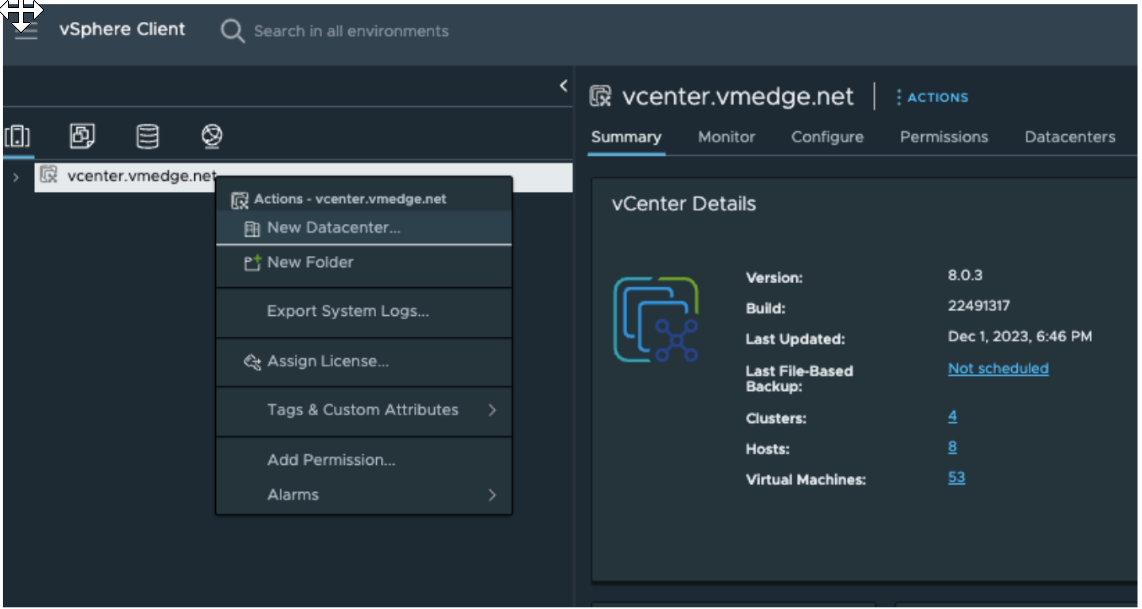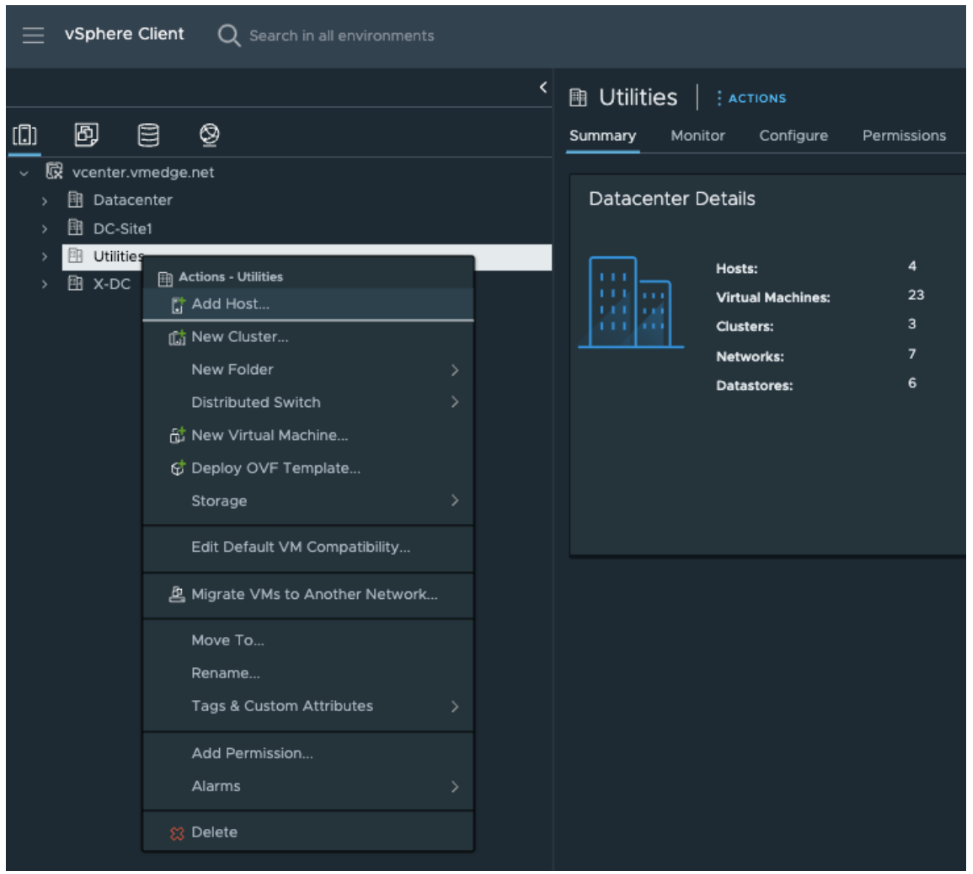vCenter Server Appliance is installed on a remote server for management of the edge clusters.
Official deployment guidance for vCSA can be found at docs.vmware.com.
From a remote machine with network access to the host, where you want to deploy vCSA, right-click and mount the ISO file (downloaded as part of the prerequisites).
Navigate within the folder structure to find the appropriate executable files for the VM to install. For example, the vcsa-ui-installer\win32\installer.exe , if you are installing the VM from a Windows operating system. VMware recommends running the .exe with administrator privileges.
The installation contains two parts, each of which might take a few minutes.
When configuring the Stage 1 network settings, the Fully Qualified Domain Name (FQDN) can be the same as the static IP address of the host.
After the installation is finished, you can access vCSA from a browser using the static IP address or FQDN.

Configure Initial Data Center and Host
Log in to vSphere Client by providing your credentials.
Right-click the vCenter Appliance icon and click New Datacenter.
Figure 2. New Datacenter 
Enter a name for the data center.
Right-click the data center that you created and click Add Host.
Figure 3. Add Host 
Enter the FQDN or IP address of the host that resides on the same network where ESXi is already installed. Provide the root login credentials of the host to connect.
For the VVS reference architecture shown in VVS Reference Architecture, there are two data centers added:
One with a single host (at the control center).
One with a cluster and two hosts (at the control building of a substation).
The inventory hierarchy of this architecture is shown in VCenter Inventory for VVS Reference Architecture. A naming convention must be established to maintain consistency as the environment scales up.
Inventory Item |
Name |
||||
|---|---|---|---|---|---|
VCenter instance |
vcenterOT.mycompany.local |
||||
Datacenter |
Control Center |
||||
Host or Cluster |
vCenter_1 |
||||
Datacenter |
Substation |
||||
Cluster |
Substation_Cluster |
||||
VM |
vAC_1 |
||||
VM |
vAC_1 |
||||
VM |
vAC_n-1 |
||||
VM |
vAC_n |
||||
Host |
Server_1 |
||||
VM |
vPR_1A |
||||
VM |
vPR_nA |
||||
Host |
Server_2 |
||||
VM |
vPR_1B |
||||
VM |
vPR_nB |
||||